|
Geography
1. Spring equinox

|
The Spring Equinox falls on 21 March every year, also called the vernal equinox is the first day of spring in the Northern Hemisphere.
Why does Spring Equinox happen?
- There is an imaginary line from North to South called the axis along where the Earth rotates.
- This rotation is responsible for day and Night.
- The axis tilts at 23.5 degrees.
- This brings more sunlight to one hemisphere of the planet as compared to the other for half of the year’s orbit around the sun.
- This difference in sunlight results in different seasons.
- Cultural Celebration of Equinox:
- The Persian New Year, ‘Nowruz’ falls on the first day of spring that welcomes all the positivity, peace, and prosperity.
|
|
Geography
2. Earthquake in Afghanistan
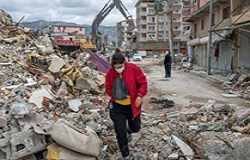
|
The US Geological Survey (USGS) measured the earthquake to be 6.5 in magnitude, and located its origin about 300 km northwest of Kabul, towards the border with Tajikistan, which has been felt in Northern India too.
About Hindu Kush region:
- North-eastern Afghanistan, where the Hindu Kush ranges are located, is an earthquake-prone area, which routinely experiences quakes of magnitude more than 6.
- The region is prone to Deep earthquakes originating mostly more than 100 km below the surface of earth.
Reason for fragility of the region:
- The Hindu Kush region in Afghanistan experiences unique tectonic forces and is a site of frequent earthquakes.
- On one side it feels the forces of the Indian tectonic plate getting under the Himalayas, a phenomenon that is occurring throughout the Himalayan ranges.
- From the other side, the Eurasian plate is subducting into the Pamir mountain ranges.
- In addition, there are local fault lines as well.
|
|
Art and Culture
3. Harichand Thakur Ji
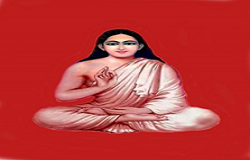
|
The Prime Minister has paid tribute to Sri Sri Harichand Thakur Ji on his Jayanti, falls on 11 March.
About:
- Harichand Thakur was born in a Namashudra peasant family in 1811 in the Orakandi village of Gopalganj District of Bangladesh.
- He was the son of Jashomanta Biswas (father) and Annapurna Devi (mother).
- He founded a sect of Vaishnavite Hinduism called Matua.
- Matua religion is based on only three basic principles - Truth, Love, and Sanity.
- He did not believe in asceticism and preached the word of God staying within the family.
- According to him, the best ascetic is the person who can express his devotion to God remaining a family man.
- He established number of schools in his locality for the education of Dalit community.
|
|
International Relations
4. India-Bangladesh Oil pipeline

|
Prime Minister of India and Bangladesh has virtually inaugurated the India-Bangladesh Friendship Oil Pipeline.
About:
- The pipeline lies from Assam’s Numaligarh refinery’s marketing depot in Siliguri to Parbatipur in northern Bangladesh.
- The 131.57-km-long pipeline will bring diesel from a marketing depot in Siliguri to Dinajpur of Bangladesh.
- The pipeline has started to supply diesel.
|
|
Polity and Governance
5. First transgender advocate at Bar council Of Kerala

|
The Bar Council of Kerala has appointed its first transgender woman Advocate Padma Lakshmi among its members.
About:
- She is a resident of Edappally in Kochi and graduated from Ernakulam Government Law College.
- The Bar Council of Kerala is the professional body for Lawyers in Kerala.
- It provides representation and services for the Bar, and Guidance on issues of professional practice.
Transgender in Judiciary:
- In 2017 India got its first transgender judge when Joyita Mondal who was appointed a judge in the Lok Adalat of Islampur in West Bengal in 2017.
- In 2018, transgender activist Vidya Kamble was appointed a member judge in a Lok Adalat in Nagpur in Maharashtra.
- Later that year, the country got the third transgender judge, Swati Bidhan Baruah, who hails from Guwahati.
|
|
International Relations
6. Vienna Convention

|
Raising pro-Khalistan slogans, the protesters broke open the makeshift security barriers and installed two Khalistani flags inside the Consulate premises, which has involved Vienna convention in talk.
About:
- The Vienna Convention on Diplomatic Relations (1961) provides the framework for the establishment, maintenance and termination of diplomatic relations on a basis of consent between independent sovereign States.
- The Convention codifies the longstanding custom of diplomatic immunity, in which diplomatic missions are granted privileges that enable diplomats to perform their functions without fear of coercion or harassment by the host country.
- It affirms the concept of “inviolability” of a diplomatic mission, which has been one of the enduring cornerstones of international diplomacy.
|
|
Economy
7. 3 billion Dollar IMF loan to Sri Lanka
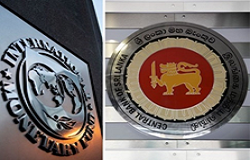
|
Sri Lanka secured a much-anticipated loan of about $3 billion from the International Monetary Fund (IMF) as the South Asian nation navigates its worst financial crisis in decades.
About IMF:
- The IMF was set up along with the World Bank after the Second World War to assist in the reconstruction of war-ravaged countries.
- The two organizations agreed to be set up at a conference in Bretton Woods in the US. Hence, they are known as ‘the Bretton Woods twins’.
- The IMF is governed by and accountable to the 190 countries that make up its near-global membership.
- India joined on 27th December 1945.
- The IMF's primary purpose is to ensure the stability of the international monetary system — the system of exchange rates and international payments that enables countries (and their citizens) to transact with each other.
- The Fund's mandate was updated in 2012 to include all macroeconomic and financial sector issues that bear on global stability.
|
|
Economy
8. Trade Receivables Discounting System (TReDS)

|
The electronic platform Trade Receivables Discounting System (TReDS) — introduced by the Reserve Bank of India (RBI) to finance or discount invoices of MSMEs and finances around 35,000 factoring units (FUs) per month.
About:
- Trade Receivables Discounting System (TReDS) is an invoice discounting platform set up by the Reserve Bank of India (RBI) for regulating the trade receivables between Micro, Small & Medium Enterprises (MSMEs), large organisations and financiers.
- TReDS is beneficial not only to those above but to the entire Indian economy.
- The key objective of the TReDS is to facilitate the financing of invoices of MSME vendors drawn on big organisations and other corporates, including Public Sector Undertakings (PSUs) and Government Departments, by discounting by the financiers.
- The participants in this system work together to facilitate, accept, discount, and settle the invoices.
- TReDS’ primary purpose is to help MSMEs manage their working capital requirements.
|
|
Environment
9. Kappaphycus alvarezii

|
The Government is planning a seaweed park in Tamil Nadu, ignoring the threat that Kappaphycus, widely grown invasive seaweed, poses to corals in the Gulf of Mannar Marine National Park running along the state's coastline.
About:
- Kappaphycus alvarezii is a red alga (seaweed) native to the Indo-Pacific.
- Its live colour is actually green or yellow.
- It reaches a length of 2 m, and can double its biomass in 15 days, has been widely introduced and cultivated in tropical regions as a source of carrageenan.
- It is cultured in more than 20 countries, and remains confined to farm areas in much of its range, but have also behaved as an invader in the Gulf of Mannar, India, the Kaneohe Lagoon Hawaii, and Bocas Del Toro in Caribbean Panama.
|
|
10. Horseshoe crabs disappearing off Odisha
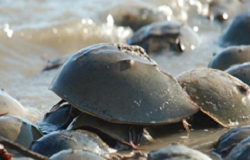
|
Horseshoe crabs appear to be disappearing from their familiar spawning grounds along Chandipur and Balaramgadi coast in Odisha’s Balasore district.
About
- Horseshoe crabs (Limulidae) are marine and brackish water arthropods.
- Despite their name, they are not crabs at all but are related to scorpions, spiders, and extinct trilobites.
- Conservation:
- IUCN: Endangered
- They are listed under Schedule IV of India’s Wildlife Protection Act, 1972.
- They are currently represented by four species including ;
- Limulus Polyphemus
- Tachypleus gigas
- Tachypleus tridentatus
- Carcinoscorpius rotundicauda
- Of the four species, two species are known to occur in India mangrove horseshoe crab (C. rotundicauda) and Tachypleus gigas.
|
|
Science and Technology
11. Leprosy

|
Lecturing on leprosy before the Royal Society of Arts, Sir Leonard Rogers related the favourable results on the treatment of disease with oils such as cod liver oil and royalin oil.
- He was the founder member of the Royal Society of Tropical Medicine and Hygiene, and it’s President from 1933 to 1935.
- About:
- Leprosy also known as Hansen’s disease (HD) is a chronic infection caused by the bacteria Mycobacterium leprae and Mycobacterium lepromatosis.
- Leprosy is not highly infectious.
- It is transmitted via droplets from the nose and mouth during close and frequent contacts with untreated cases.
- Leprosy is curable with the combination of drugs known as Multi-Drug Therapy (MDT).
|
|
Science and Technology
12. INS Androth
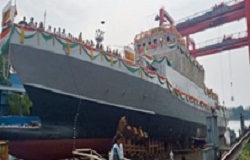
|
The INS Androth, second in a series of eight Anti-Submarine Warfare Shallow Water Craft (ASW SWC), was launched in Kolkata.
Background:
The first ship of the series, the INS Arnala, was launched three months ago.
About:
- Built by: Garden Reach Shipbuilders and Engineers (GRSE) in Kolkata
- INS Androth is about 77.6 metres long and 10.5 metres wide, and requires a draught of only 2.7 metres.
- These ships can attain a maximum speed of 25 knots.
- Their primary role is to conduct anti-submarine operations in coastal waters, low intensity maritime operations and mine laying operations.
- INS Androth draws its name from the largest and longest island from Andrott Island, also known as Androth Island, in the Lakshadweep archipelago.
|
|
Science and Technology
13. First evidence of volcanic activity on Venus
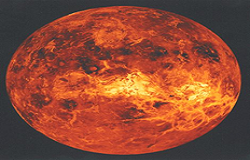
|
Scientists have got direct geological evidence of recent volcanic activity on the surface of Venus.
About:
- The discovery was made by analysing archival radar images of Venus taken more than 30 years ago by NASA’s Magellan mission.
- The images revealed a volcanic vent changing shape and increasing significantly in size in less than a year.
|
NASA's new mission to Venus ‘VERITAS’ aims to discover more volcanic activity on planet.
|
Key features of Venus:
- It is the second planet from the Sun and sixth in the solar system in size and mass.
- It is the second brightest natural object in the night sky after the Moon, probably that is the reason why it was the first planet to have its motions plotted across the sky, as early as the second millennium BC.
- Unlike the other planets in our solar system, Venus and Uranus spin clockwise on their axis.
- It is the hottest planet in the solar system because of the high concentration of carbon dioxide which works to produce an intense greenhouse effect.
|
















